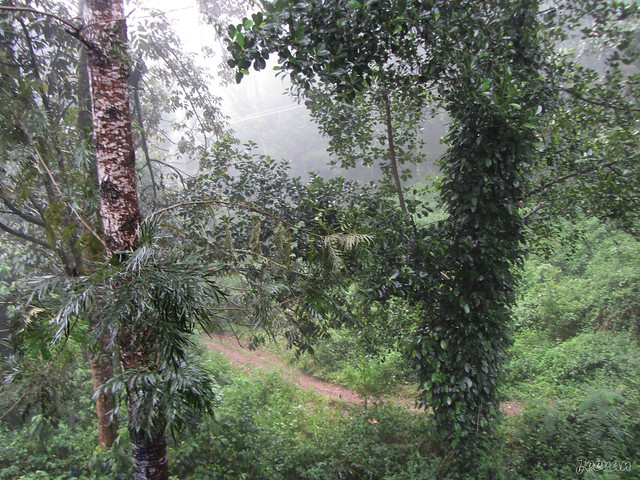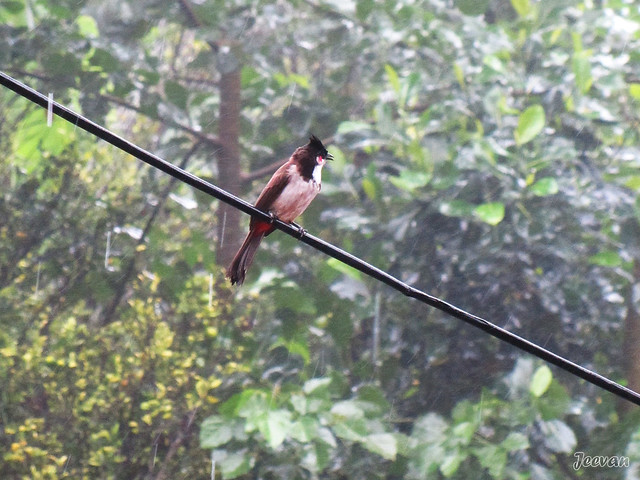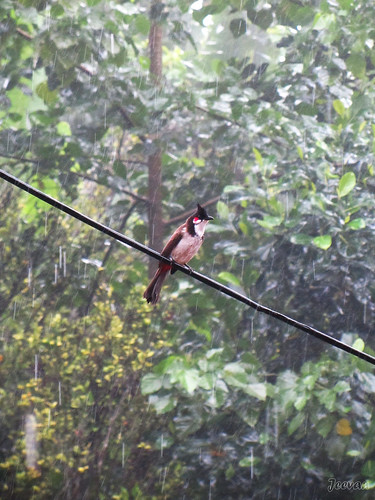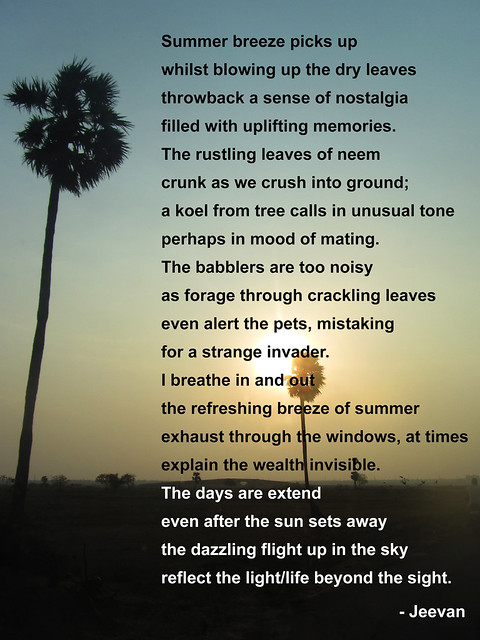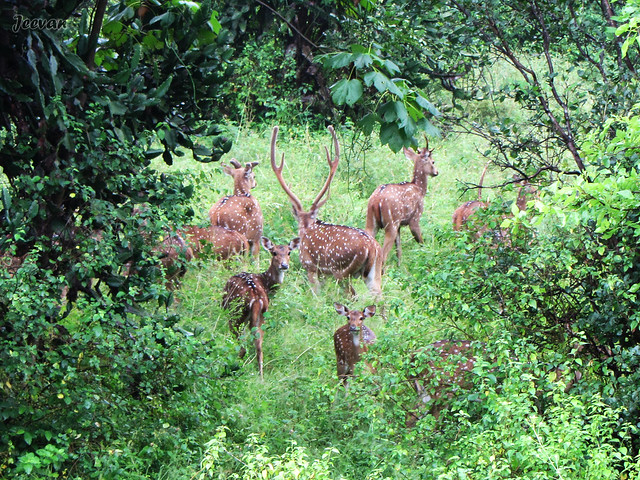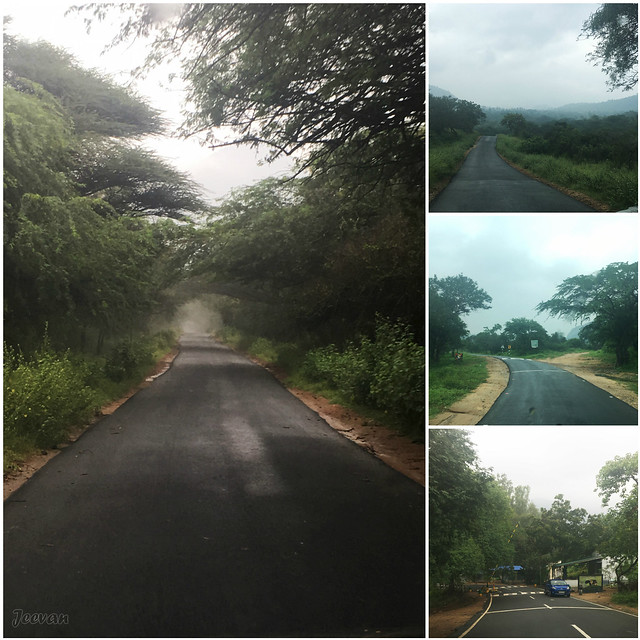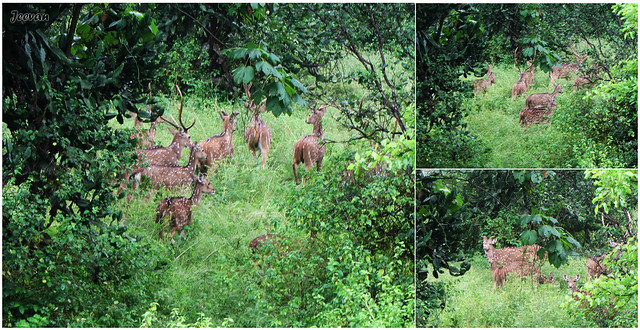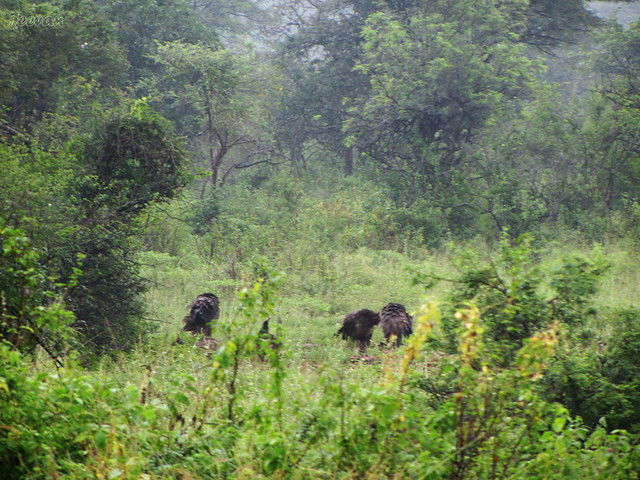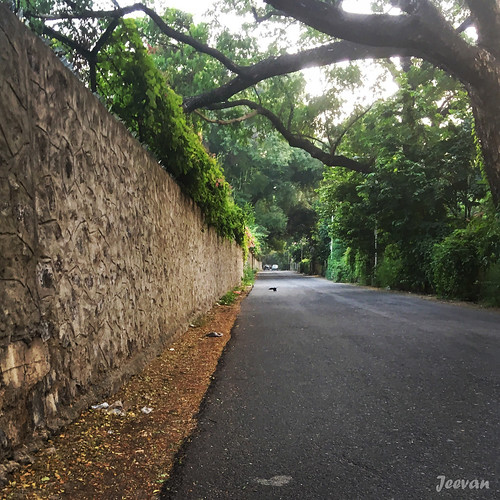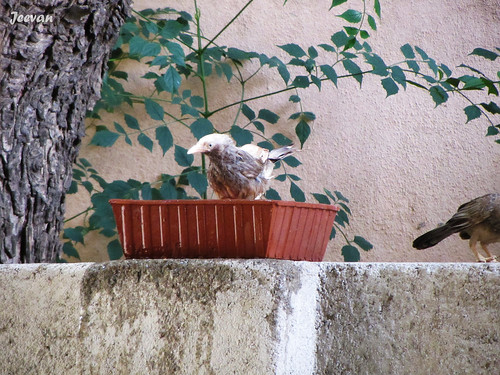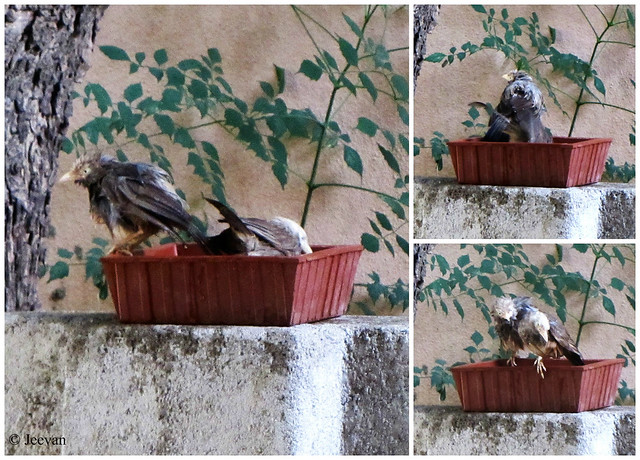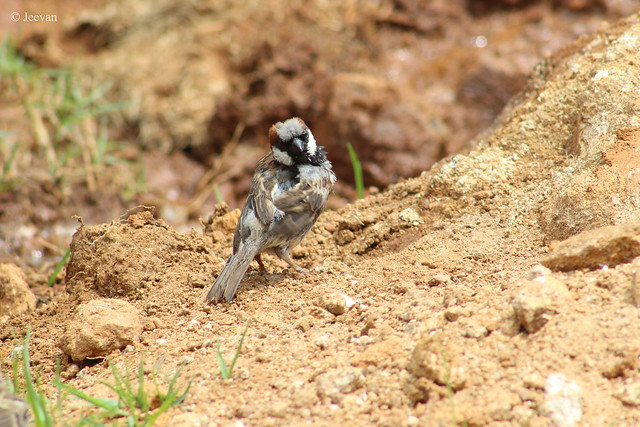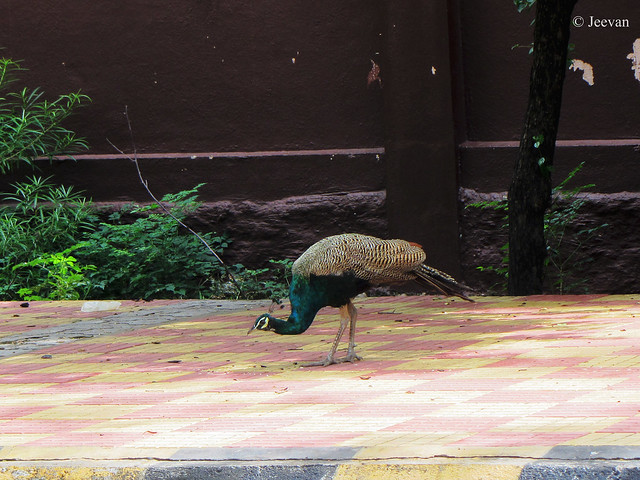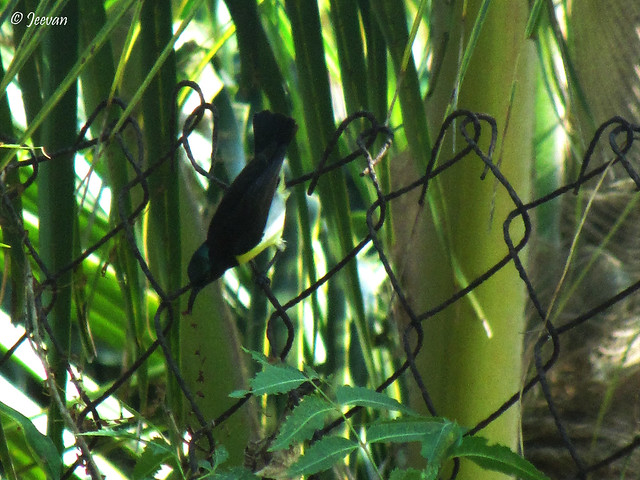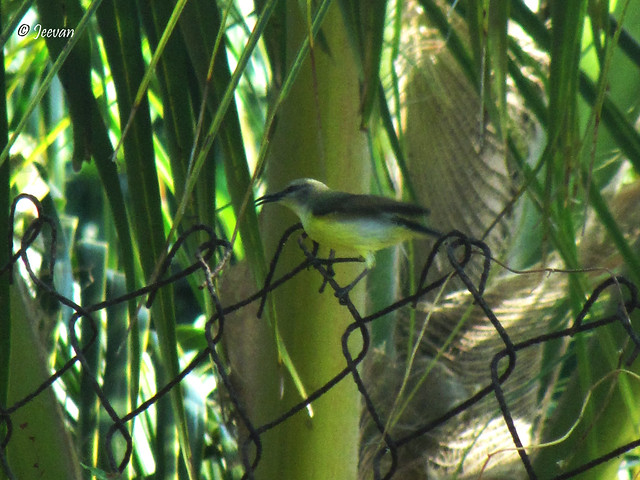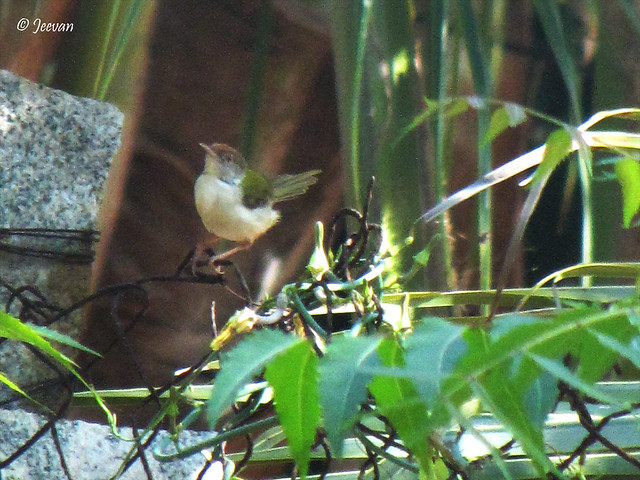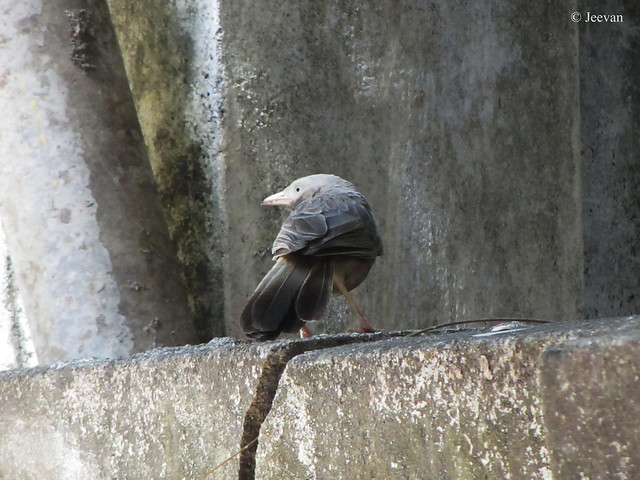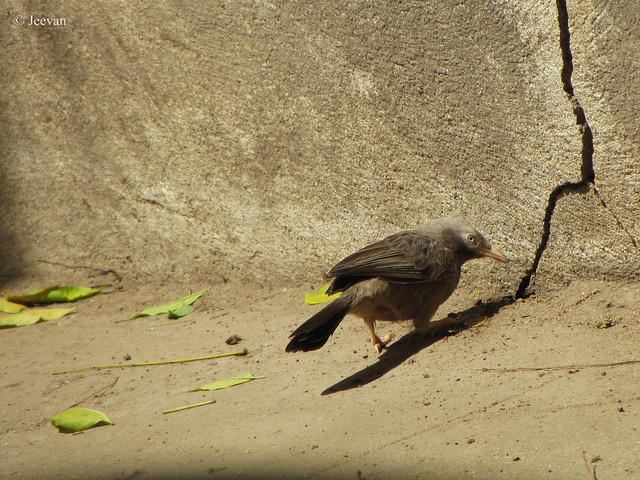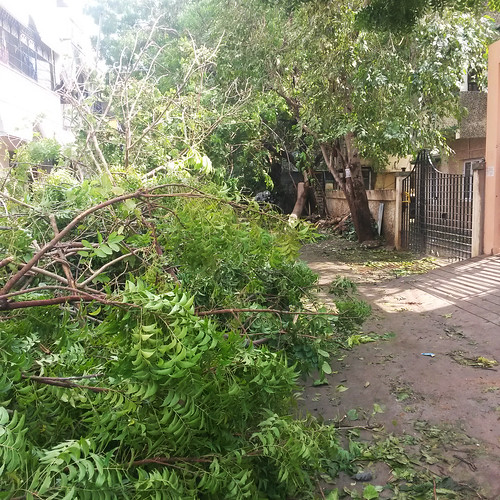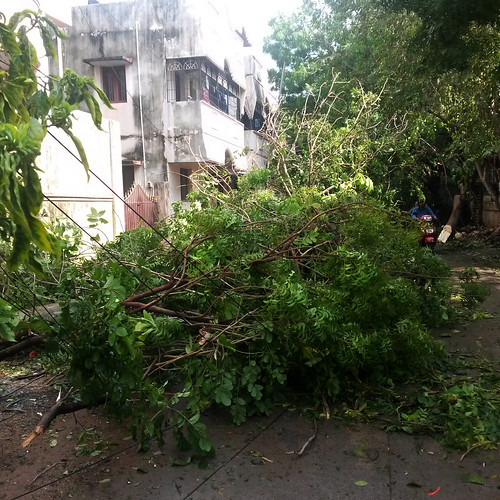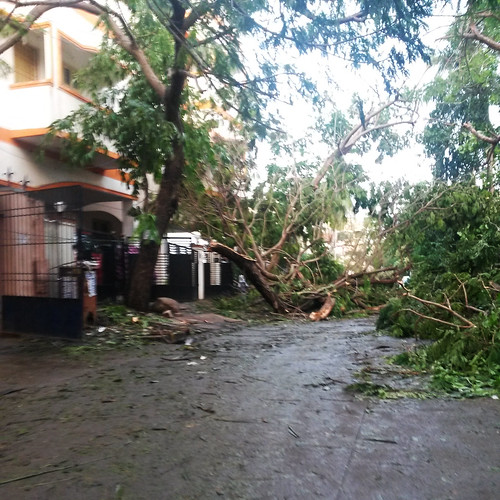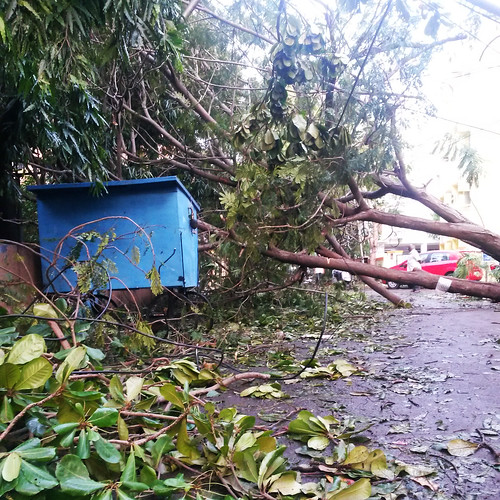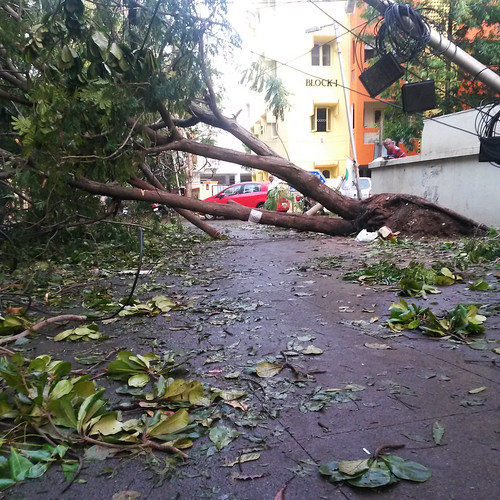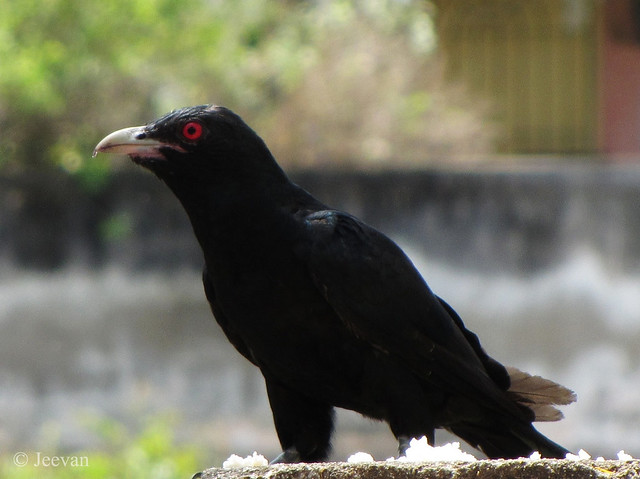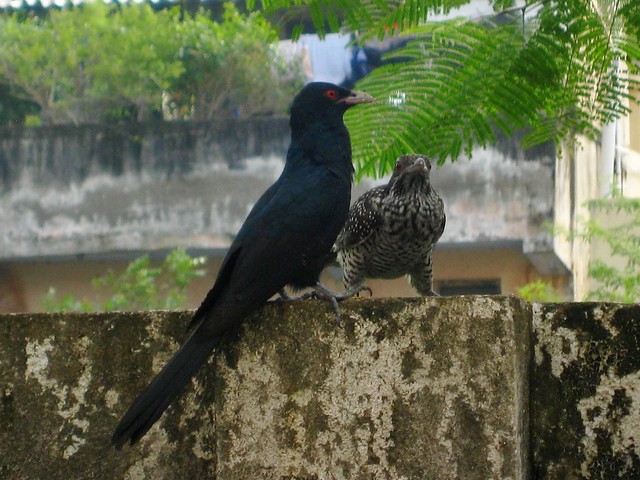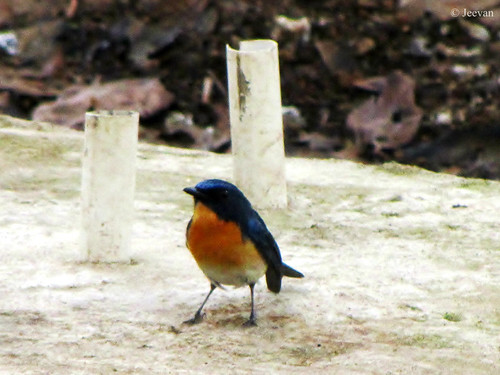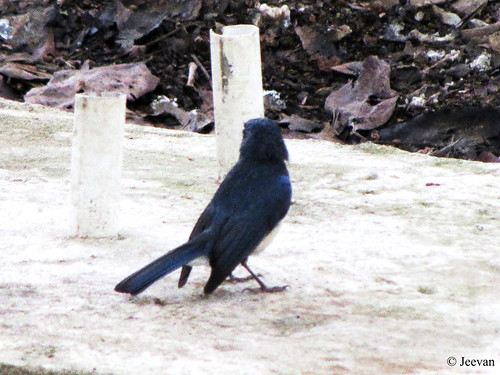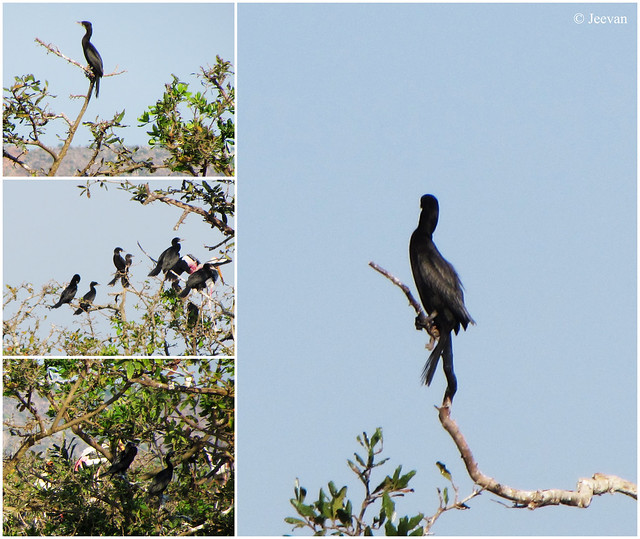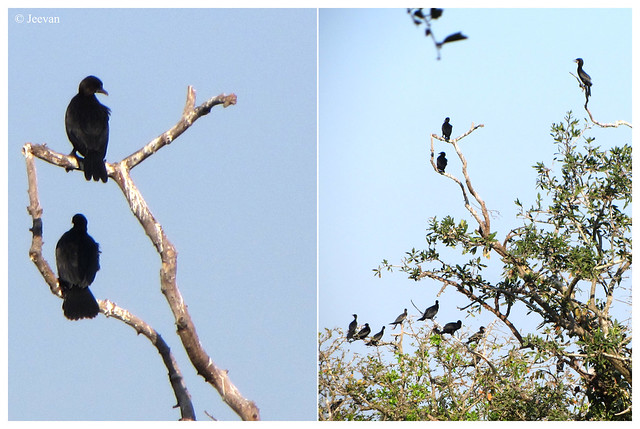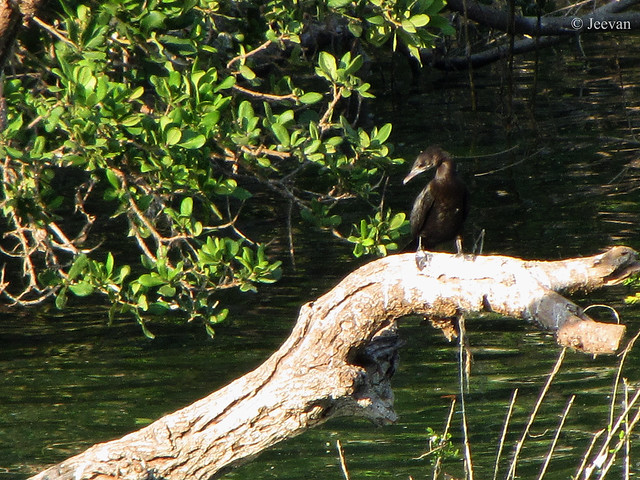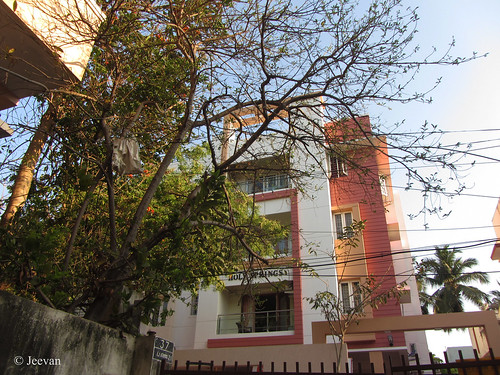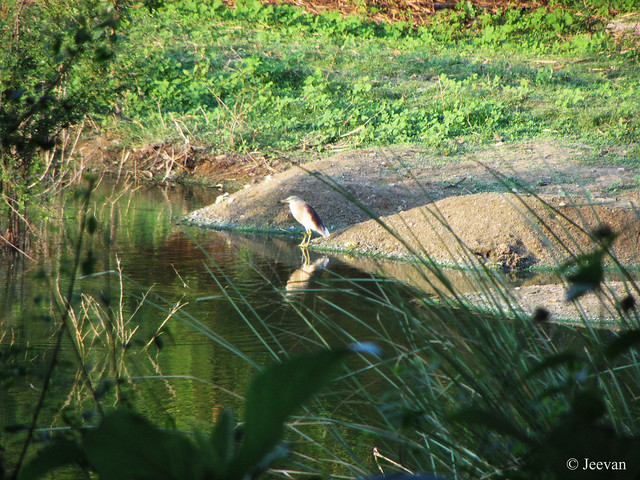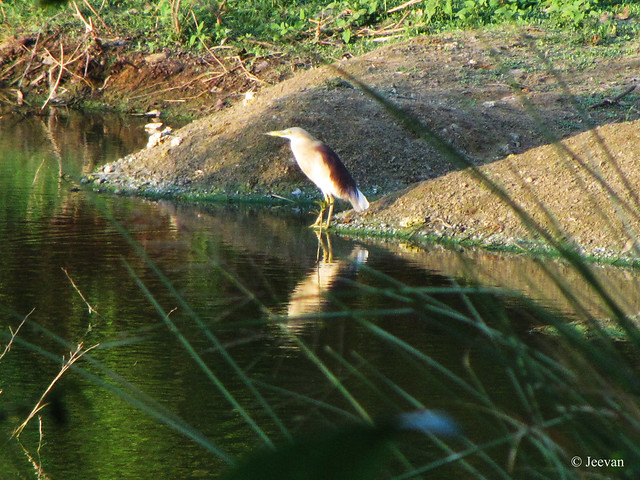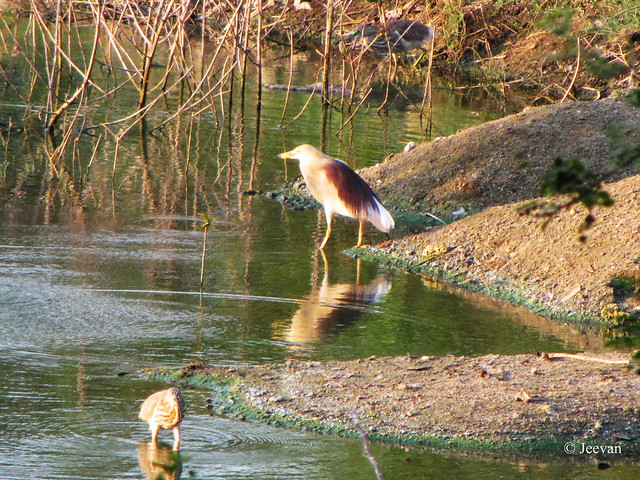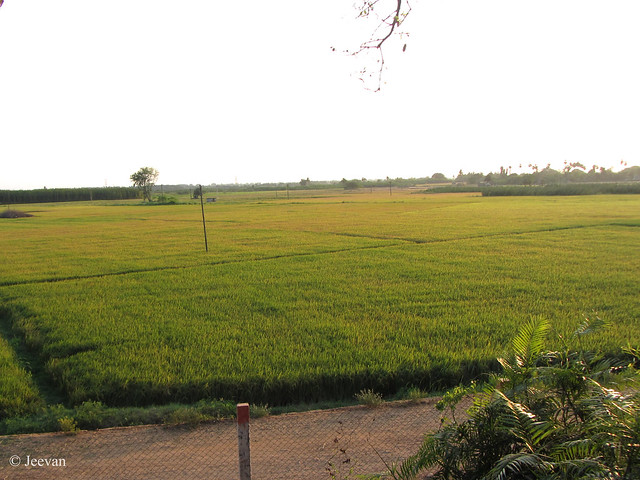I visited the Vedanthangal Bird
Sanctuary, about 80km from Chennai, on Friday. And this was the first outing
with my grandmother after grandfather passed away in December. I have been to
Vedanthangal more than couple of times but only this time I find (or went on
seeing) a huge arrival of birds, and most of them were Painted Stork and Little
Cormorants followed by moderate numbers of Grey pelican, Back-headed ibis, Little
and Great egrets and Spoonbill.
 |
| A scenic view across the bird sanctuary, shot by my brother from the watch tower |
Vedanthangal is
the oldest lake bird sanctuary in the country and the steps to develop it into
a bird sanctuary has started as early as 1798 when the British government
realized the ornithological importance of the region. The small lakes dotted
this area acts as feeding grounds for the birds, so it was attracted by variety
of birds. Vedanthangal, meaning hamlet of the hunter, got its name from the act
of hunting of birds by the local landlord in the early 18th century.
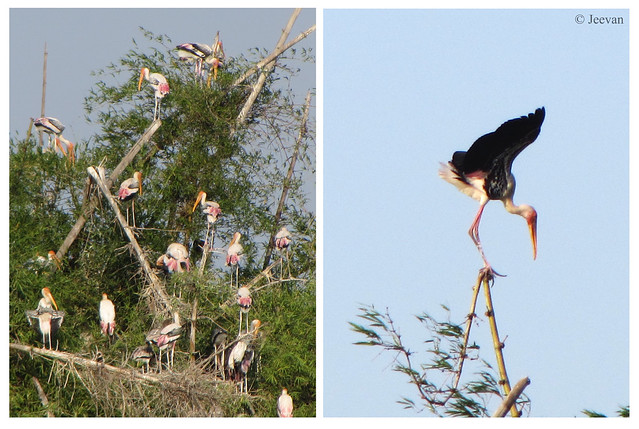 |
| Painted Storks on a withered bamboo shrub |
Though the
Vedanthangal Lake was declared as bird sanctuary in 1972, it has a unique
history where the local populace provide protection to the sanctuary for
centuries. The locals realized that the birds dropping falling into the lake
create an effect (liquid guano), and when the water is used to irrigate crop
fields it yield greatly and saves the fertilizers cost. And due this the locals protect the sanctuary
and thus it attracts around 40,000 birds every season, with an area of only 30
ha.
Proving that,
the other side of the lake (pic above) was flourished in a golden/green meadow of paddy
field! While being fascinated by the birds that decorate the number of trees
stood inside the lake, the vast paddy fields on the opposite confront its scenic
beauty upon growing sunset was stunning. The paddy fields with little/great
egrets foraging is always a beautiful sight and one could not miss such views
during a visit to Vedanthangal.
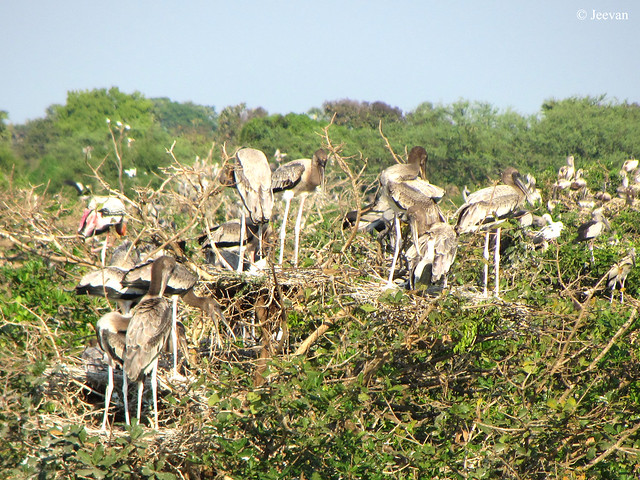 |
| Painted storks, juveniles, standing on their nests |
We had been to
Vedanthangal in the evening unlike my previous visits in afternoon; I was
amazed at the number of birds. But when the evening started to immerse, as sun continue
to keep down its effect, many flock of birds resume to the lake after foraging
in surrounding lakes. When we arrived the noise of birds weren’t louder unlike
it gets darker and it seems it’s the nesting season for Painted Storks, as we
saw many juvenile birds of same standing all-over the nests.
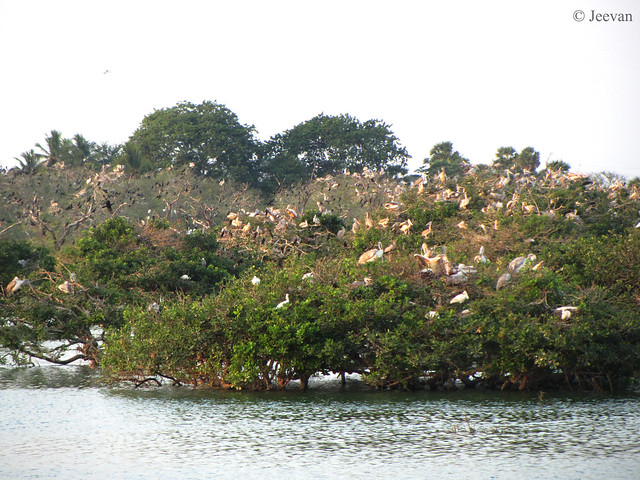 |
| A group of spot-billed pelicans, little cormorants and egrets occupies the trees |
Birds migrate
to Vedanthangal mostly in winter season (between October-March), but this time
due to the torrential rains in December there’s enough water in the lake for the
birds to extend their stay. Right now, it is estimated to be about 15,000 birds
at the sanctuary. Apart the plenty of painted storks, little cormorants and grey
pelicans, I tried to observe variety of birds but was amused to find spoonbills,
openbills, a grebes and night heron, only at home when checking the photos!
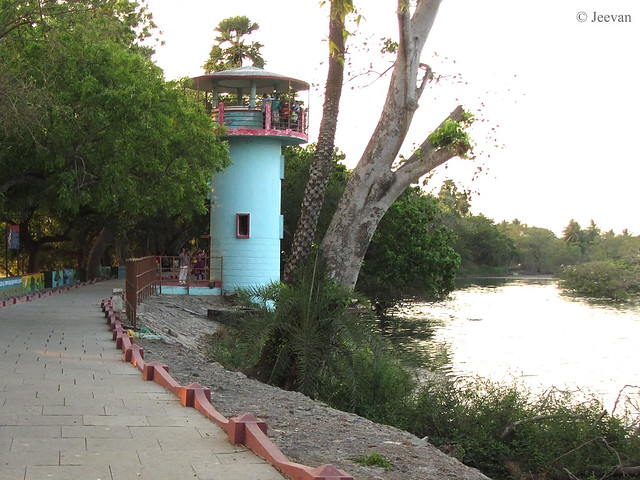 |
| The watch tower that used to have a telescope, but it seems to be miss this time. The neat pavement along the lake. |
Although we
brought a binocular, it was little painful to watch through the pair of lenses
but I loved the close view somehow. Vedanthangal has a pretty neat and flat
pavement along the lake bank allowed me covering the entire stretch in my
wheelchair. There are couple of watch towers and view points along the footpath
to observe birds and I find more interesting shooting birds this time. At the end of day, we were left with a magnificent
sunset with flock of birds flew in foreground.
I took number
of photos and it’s impossible to post all at a time… so decided to make many
posts out of it and more details on birds.
Linking this post with
SATURDAY CRITTERS





